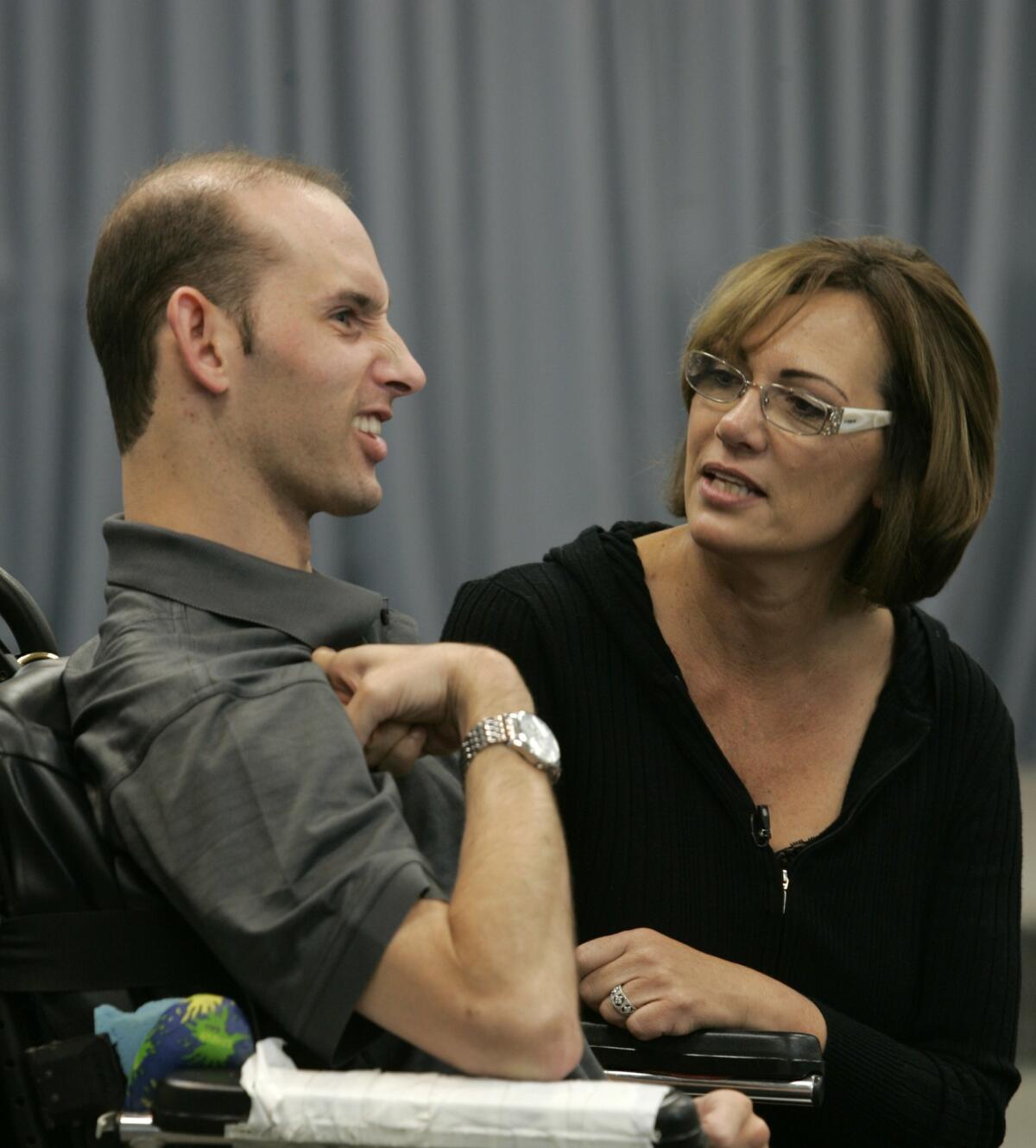Meth, heroin deaths climb in SD
Resurgence in cheap, Mexican-made meth partly blamed
Cheap and potent.
That’s the methamphetamine and heroin coursing through San Diego County streets, and the surge is continuing to claim more and more lives.
The latest local death statistics, released last week, bear out a sobering reality. People killed last year from meth: 190, an all-time high. And deaths from heroin: 89.
Related graphic
Law enforcement officials are fighting against the pure volume of the drugs coming north, especially the meth being manufactured for next to nothing in Mexico’s “superlabs,” then smuggled by cartels and smaller entrepreneurial organizations across the border.
“The organizations have access to virtually any drug out there,” said Gary Hill, an assistant special agent in charge at the U.S. Drug Enforcement Administration in San Diego. “They are trying to be user-friendly distributors.”
Authorities have hit back hard, ramping up seizures, coordinating with counterparts in a variety of task forces and going after traffickers — from street-level gangs to the powerful Sinaloa cartel — with a series of recent indictments.
It’s a constant, if sometimes frustrating, battle, Hill acknowledges, but it’s not for nothing.
“Every seizure we make, that means less drugs on the street,” he said. “But we are fighting addiction. If someone is not ready to go into treatment, there’s not much we can do about that.”
U.S. Attorney Laura Duffy, in announcing the takedown of a San Diego-based meth-trafficking ring earlier this year, called the resurgence of meth “a tremendous public health crisis.”
When it comes to prevention and education, understanding who the users are is key.
According to data the county Medical Examiner’s Office released last week, prescription opioids like oxycodone tend to be the choice drug for teens, besides marijuana. The pills, often snatched from a medicine cabinet, seem less threatening than other drugs to new users. It’s a dangerous illusion, as addiction can be quick.
Crackdowns on over-prescribers and Internet sales, as well as the development of programs that encourage people to properly dispose of unwanted prescription medications, have made the pills harder — and more expensive — to come by.
So many addicted young adults have turned to heroin for a similar but cheaper high.
“A single hit of OxyContin can go for up to $40, whereas you can get 10 bindles of heroin that’s good for two to three hits, for a fraction of the cost,” Hill said.
The transition to a new drug also ups the risk for overdose.
Older addicts, from age 30 and up, tend to rely on meth, the data shows. The addicts who have died likely used the drug for several years, resulting in a steady deterioration of the body, experts say.
However, authorities say a newer, younger crop of meth users also forming, thanks to the low cost and plentiful supply.
San Diego DEA agents are also seeing another deadly drug crossing the border here: fentanyl. The opiate-based drug is much more potent than morphine, and is often used to treat extreme, chronic pain or for anesthesia before surgery. It is basically synthetic heroin.
It has been cropping up laced in heroin in the past year in the Northeast, where it has been blamed for dozens of overdose deaths. Local authorities are concerned the drug is being smuggled in through San Diego. In the past six months, federal authorities here have seized multiple kilograms of fentanyl being smuggled through the county believed to be headed to the East Coast.
“We believe the Mexican cartels are involved in the manufacturing of fentanyl, similar to meth,” Hill said.
There have been no documented cases of fentanyl-laced heroin deaths in San Diego County, Hill said, although the medical examiner’s data shows 14 people died from fentanyl last year.

Sherrie Rubin, who has devoted her life to educating others about the dangers of drug abuse, often hears the personal stories behind the death statistics.
Her son was almost one of them.
Aaron Rubin was a 23-year-old addict when he took a cocktail of pills at a party in 2005. He was in a coma for three weeks. His family was told to prepare for a funeral.
He survived, although his life is radically different. A paraplegic in a wheelchair, he can’t talk, feed or dress himself. His communication is simple nowadays: one finger for “yes,” two for “no.”
But the message he sends to middle- and high-schoolers in his anti-drug presentations is a powerful one.
“I really feel that young adults are smart, and if presented the information early enough, for the most part most make good decisions,” his mother said.
She also supports the Sheriff’s Department’s willingness to arm deputies with Naloxone, a nasal spray that reverses the effects of an opiate overdose, and hopes the program will be embraced countywide.
“The reality is, a lot of addicts I’ve spoken to say that near-death situation is what spurs them to get into recovery and take it seriously,” Rubin said. “I think that will save a lot of lives.”
The Escondido mother and son have taken their message to television, appearing on VH1’s “Celebrity Rehab” and Lifetime’s “Teen Trouble.” In September, their interview with Maria Shriver will air on the “Today” show.
“We’re trying to get into people’s living rooms and talk about something most people don’t want to talk about,” Rubin said.
“We need to get away from the thinking that this can’t happen to your family. It can and it does, everyday.”
